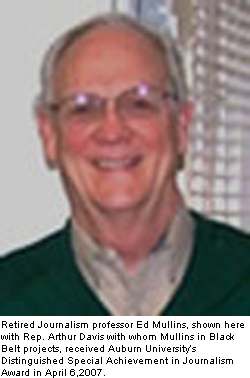Open-Air Market on Sept. 13th, 2007
Sept. 13, 2007
Bring Home-Grown Produce, Blues to Ferguson Plaza
Contact: Christopher H. Spencer, 205-348-7374, chspencer01@ua.edu
Homegrown Alabama will bring an open-air market to the Ferguson Center Plaza on The University of Alabama campus Thursday, September 13, from 3-6:30 p.m.
This is the second on-campus farmers market hosted by Homegrown Alabama in collaboration with the Ferguson Center, the Office of Community Affairs, and the Alabama Farmers Market Authority.
Homegrown Alabama is a student-led group that seeks to educate students about the value of local produce, as well as to foster partnerships between local farmers and the University.
"The market is an excellent opportunity for students to interact with area farmers and support our local economy," said Christopher H. Spencer, associate director for community development in the Center for Community-Based Partnerships, which helped organize the event.
Fourteen farmers and vendors from the Tuscaloosa-Northport area, the Black Belt and elsewhere around the state will participate. Produce for sale includes sweet potatoes, squash, cucumbers, tomatoes, grapes, melons, peaches and okra. Jars of home-prepared honey, jams and jellies, fresh pastries and eggs and plants will also be for sale.
Alabama Blues Project, featuring Debbie Bond and Radiator Rick, will perform during the market. Homegrown Alabama, with help from the Alabama Farmers Market Authority, will sell "Buy Fresh/ Buy Local" t-shirts and tote bags. Bama Dining will provide a drink kiosk.
Partners for the event include the UA Office of Community Affairs, Ferguson Center, Bama Dining and the Alabama Farmers Market Authority.
Homegrown Alabama, formed in 2005, has about a dozen student members from varying academic majors and colleges. Homegrown's advisers are Carl Bacon, director of the Ferguson Center, and Mildred P. Switzer, instructor of human nutrition and hospitality management.
Key student planners are Keri Coumanis, Molly McNutt, Clay Morrison, Sierra Perkins and Andrea Mabry. The students are either members of Homegrown Alabama or currently enrolled in Nutrition and Hospitality Management 490, an independent study course in the College of Human Environmental Sciences.
"These students have worked diligently throughout the summer and the first few weeks of fall semester to ensure that a fall farmers market would take place," Spencer said.
To learn more about Homegrown Alabama's mission, or to become a member, visit www.homegrownalabama.org.



